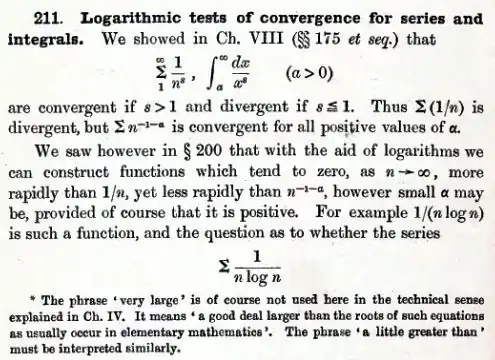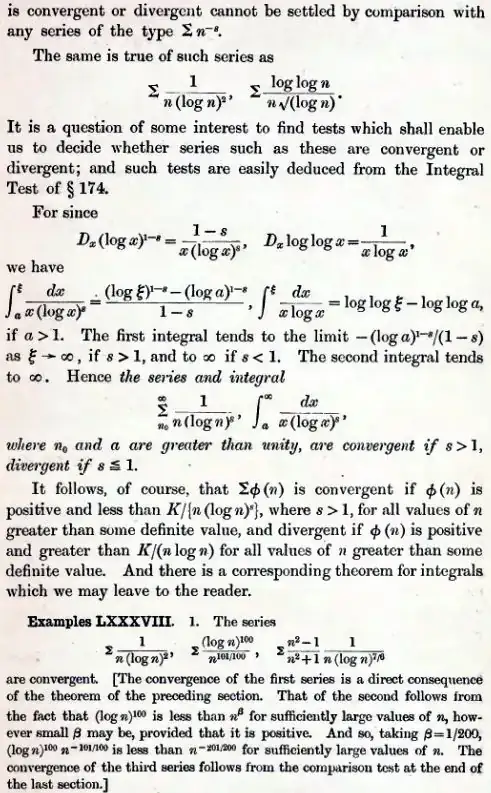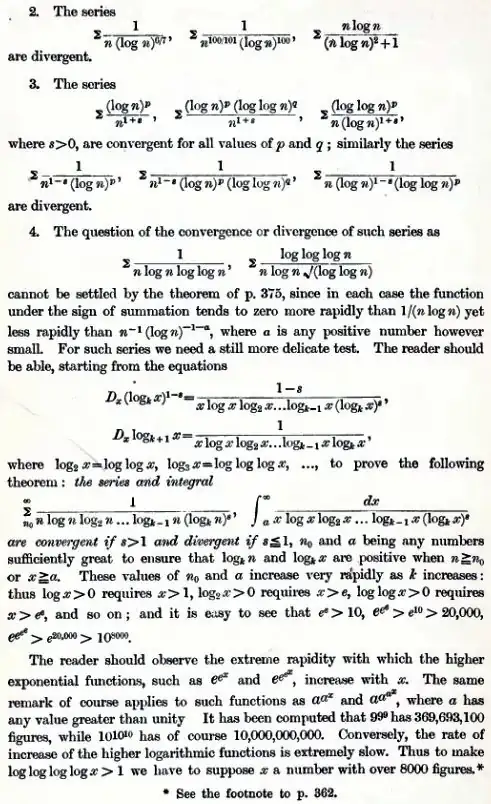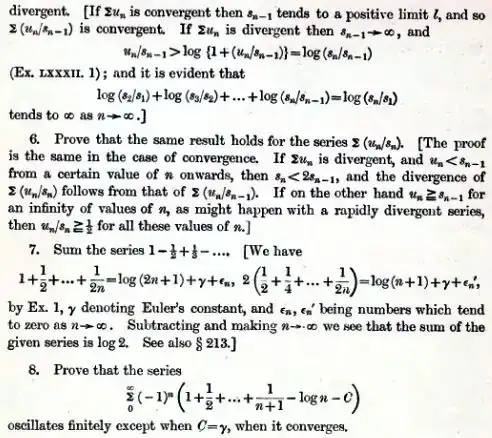We all know that $\displaystyle \sum_{n=1}^{\infty} \frac{1}{n^s}$ converges for $s>1$ and diverges for $s \leq 1$ (Assume $s \in \mathbb{R}$).
I was curious to see till what extent I can push the denominator so that it will still diverges.
So I took $\displaystyle \sum_{n=2}^{\infty} \frac{1}{n\log n}$ and found that it still diverges. (This can be checked by using the well known test that if we have a monotone decreasing sequence, then $\displaystyle \sum_{n=2}^{\infty} a_n$ converges iff $\displaystyle \sum_{n=2}^{\infty} 2^na_{2^n}$ converges).
No surprises here. I expected it to diverge since $\log n$ grows slowly than any power of $n$.
However, when I take $\displaystyle \sum_{n=2}^{\infty} \frac{1}{n(\log n)^s}$, I find that it converges $\forall s>1$.
(By the same argument as previous).
This doesn't make sense to me though.
If this were to converge, then I should be able to find a $s_1 > 1$ such that
$\displaystyle \sum_{n=2}^{\infty} \frac{1}{n^{s_1}}$ is greater than $\displaystyle \sum_{n=2}^{\infty} \frac{1}{n (\log n)^s}$
Doesn't this mean that in some sense $\log n$ grows faster than a power of $n$?
(or)
How should I make sense of (or) interpret this result?
(I am assuming that my convergence and divergence conclusions are right).





<. Probably confusion with html tags. Sivaram, please use\log ninstead of just logn. – Aryabhata Nov 11 '10 at 21:32